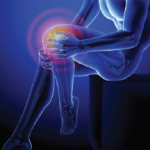Although she acknowledged it’s not evidence based, “when you have an experience like that, you become a true believer that when triple therapy fails, rituximab may play a role.” She said she would prefer eculizumab, but said clinicians “have to be reasonable about what we can actually get.”
For preventive treatment in patients with the lupus anticoagulant type of anti-phospholipid antibody, aspirin alone has proved insufficient. “But whatever is chosen needs to be as safe as aspirin,” Dr. Petri said, because over the course of 20 years patients will have a 50% chance of having a thrombotic event.
Hydroxychloroquine has been shown to reduce thrombosis risk by 50%, she said. Signaling downstream of complement activation—including activation of the tissue factor PAR-2 and neutrophils—has begun widening the range of potential therapies. They include vitamin D, which inhibits expression of tissue factor, and even statins, Dr. Petri said.
“We’re going to be much smarter in the future.”
Treatment Choice in RA

Dr. Kavanaugh
Arthur Kavanaugh, MD, professor of medicine at the University of California, San Diego, was effusive in his assessment of the slate of options available to RA patients. “It’s been a very exciting time,” he said, but debate remains about how soon patients should be treated, he said.
Studies have found that early treatment of patients with undifferentiated arthritis has not proved effective at preventing the development of RA. But a 2017 study looked at patients with undifferentiated arthritis who were considered high risk using a score that included gender, age, stiffness, swollen joints and other factors. Researchers found that six of the 11 high-risk patients who were treated with methotrexate went on to develop RA, while all 11 in a placebo arm did. Another study found that treating similarly high-risk undifferentiated arthritis patients with a single dose of rituximab delayed the time to progression to RA.4,5
But this early treatment approach can be contentious, Dr. Kavanaugh said. “You’re overtreating some people to prevent it in others,” he said. “So it’s raised some issues that have affected the ethical consideration of study design.”
Although treating to target is “the ultimate idea,” the decision on which agents to use is “a little less” clear, he said. “Really, what we’ve learned in recent years is not bench to bedside as much as it’s been bedside to bench,” he said. “By using different targeted therapies across different diseases, we’ve learned more about those diseases. … With all the different agents we have, we’re learning more about how to use them, but we don’t have anything that will prospectively tell us.”


